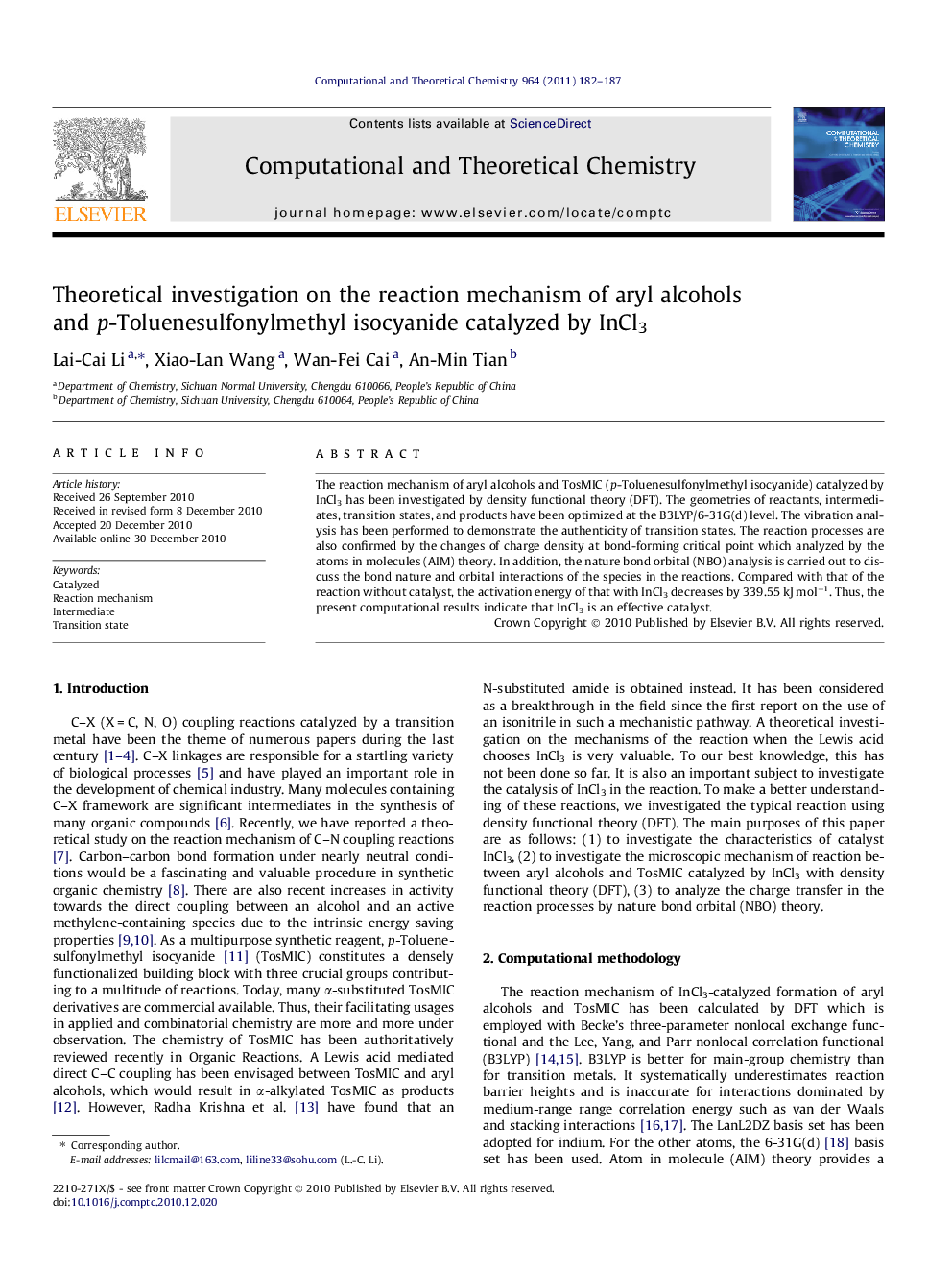| Article ID | Journal | Published Year | Pages | File Type |
|---|---|---|---|---|
| 5395321 | Computational and Theoretical Chemistry | 2011 | 6 Pages |
Abstract
The reaction mechanism of aryl alcohols and TosMIC (p-Toluenesulfonylmethyl isocyanide) catalyzed by InCl3 has been investigated by density functional theory (DFT). The geometries of reactants, intermediates, transition states, and products have been optimized at the B3LYP/6-31G(d) level. The vibration analysis has been performed to demonstrate the authenticity of transition states. The reaction processes are also confirmed by the changes of charge density at bond-forming critical point which analyzed by the atoms in molecules (AIM) theory. In addition, the nature bond orbital (NBO) analysis is carried out to discuss the bond nature and orbital interactions of the species in the reactions. Compared with that of the reaction without catalyst, the activation energy of that with InCl3 decreases by 339.55Â kJÂ molâ1. Thus, the present computational results indicate that InCl3 is an effective catalyst.
Related Topics
Physical Sciences and Engineering
Chemistry
Physical and Theoretical Chemistry
Authors
Lai-Cai Li, Xiao-Lan Wang, Wan-Fei Cai, An-Min Tian,
